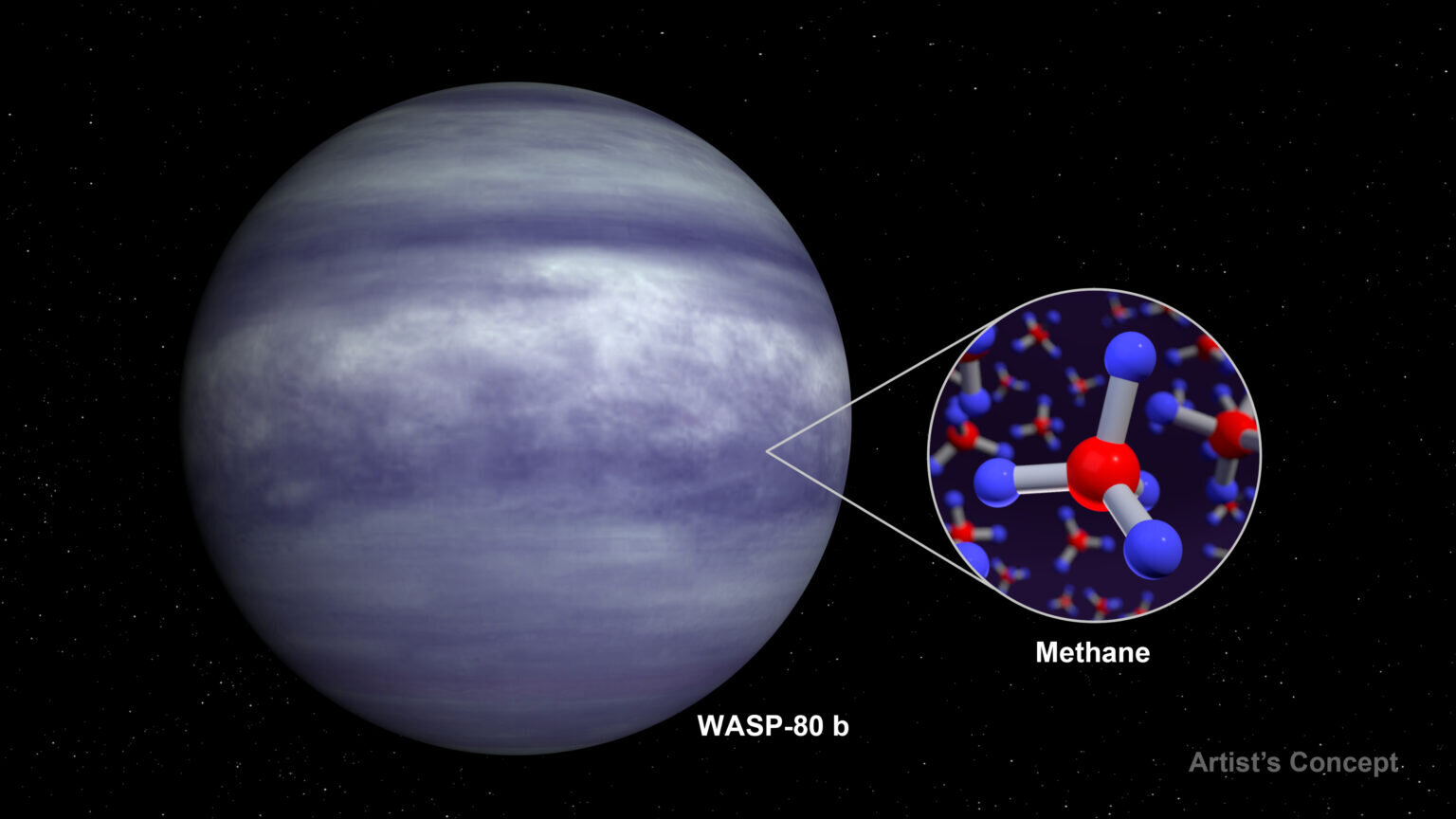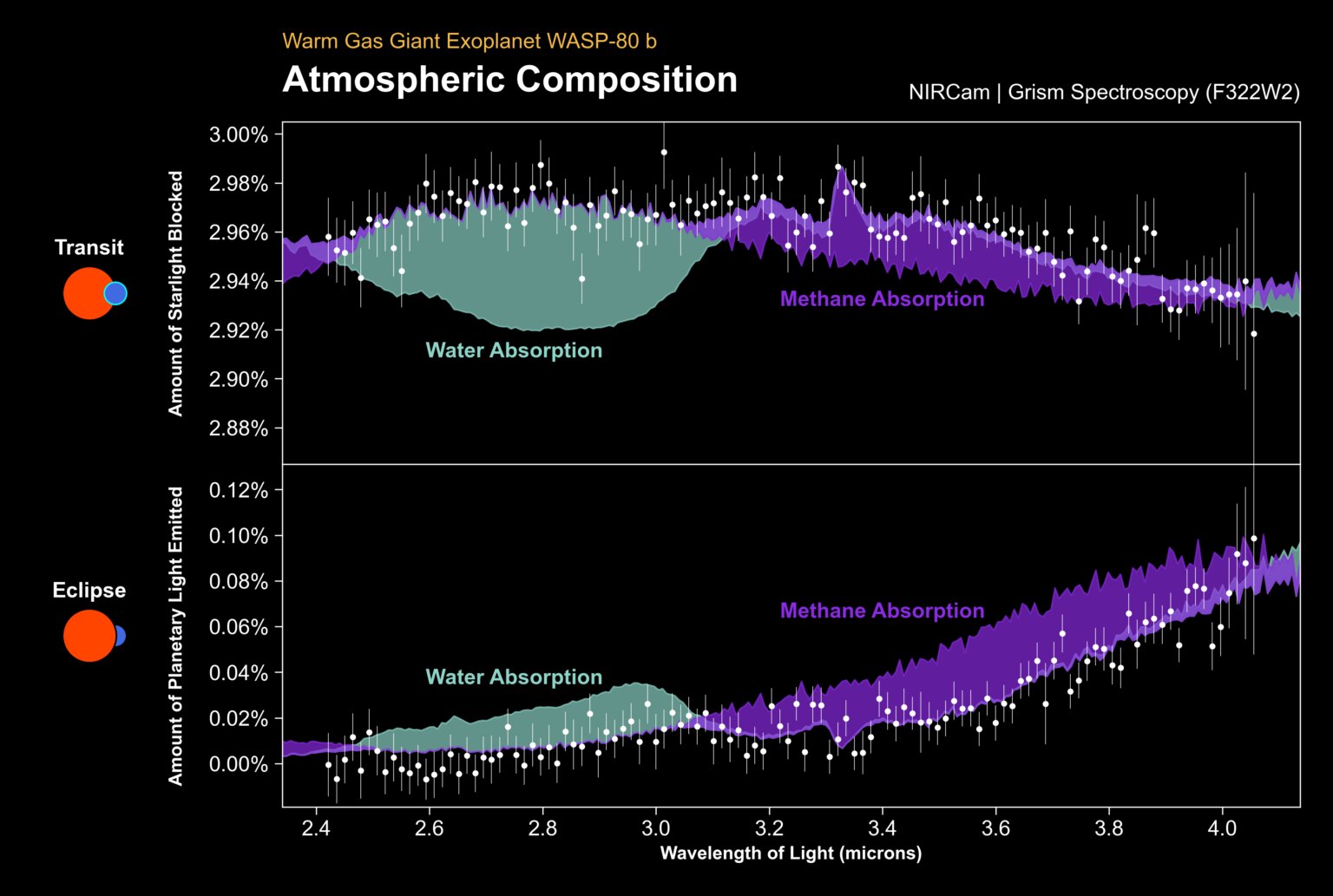Scientists found methane in the atmosphere of the exoplanet WASP-80 b. This compound is one of the main components of living matter, but until now it has rarely been found on bodies that do not orbit the Sun. Astronomers were helped to detect methane by the James Webb Space Telescope.

Methane and water on gas giants
The James Webb Space Telescope conducted spectroscopic studies of the planet WASP-80 b as it passed in front of and behind its star. Due to this, water vapour and methane were detected in its atmosphere. Both are considered biomarkers, that is, substances that indicate the possibility of the existence of life.
However, water vapour has not been observed outside the Solar System for the first time, but methane on exoplanets can still be considered a sensation. This molecule is present in sufficient quantities in the composition of Jupiter, Saturn, Uranus and Neptune, and on gas giants orbiting other stars, it has somehow been hidden from researchers until now.
Exoplanet WASP-80 b
At a surface temperature of about 825 Kelvin, WASP-80 b is what scientists call a “warm Jupiter.” These are gas giants, very similar to those that exist in our Solar System. However, the conditions on them are intermediate between hot Jupiters, where it can exceed the values at which most metals melt and worlds where not only water freezes, but also some gases.
The red dwarf orbiting WASP-80 b is located 163 light-years away in the constellation Aquila. The exoplanet makes one orbit around it in just 3 days. Because of this, even such a modern telescope as James Webb cannot separate the light of the star from what passed through the planet’s atmosphere.
Therefore, scientists are studying the combined radiation from the entire system. They use the transit and the eclipse methods to do this. The first is to observe the planet when it passes in front of the star, if viewed from our side, and the second is when behind it.

How scientists found methane
During transit, scientists receive basic information from the rays of the star’s light that pass through the atmosphere in a thin band at the border of day and night. Thanks to them, scientists will learn the parameters of the atmosphere and its chemical composition.
During eclipses, information is received mainly during those short periods of time when the surface of the planet illuminated by the star has not disappeared from us yet. At this time, it is possible to measure both the light that falls on the surface of WASP-80 b and the one that is emitted by it. Due to the fact that the planet is much colder than the star, they can still be distinguished.
The difference between the light that falls on the surface of WASP-80 b and that coming from it is the thermal radiation of objects on the surface. Among other things, it also has its own spectrum. Water and methane were found using both the first and second methods.
Studying the atmospheres of exoplanets
Scientists tested the results obtained by two different statistical methods and made sure that they are not an artefact of information processing. Now they are thinking about how to apply them to the study of other exoplanets.
In particular, they want to find out the ratio between carbon and oxygen atoms in different worlds. It is expected that it will change depending on whether a planet has formed near or far from its star and what its age is.
Scientists are also very interested in the opportunity to compare the results with the gas giants in the Solar System. They want to find out how typical representatives of their classes of celestial bodies these giants are. Finally, scientists plan to find out how chemical processes that occur in different conditions differ.
According to phys.org
Follow us on Twitter to get the most interesting space news in time
https://twitter.com/ust_magazine


